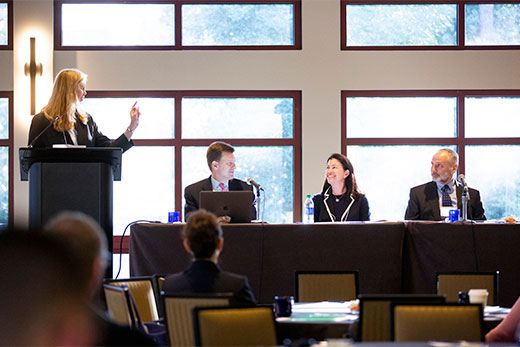
Free speech and academic freedom have become intensely debated issues on college and university campuses in recent years. As institutions grapple with demands for inclusivity, protecting students, and ideological diversity, conflicts have arisen over controversial speakers, classroom content, and limits on expression. Navigating these complex tensions in a constructive way remains an ongoing challenge.
Controversial Campus Speakers
One flashpoint has been controversies surrounding guest speakers at colleges. Student groups and outside organizations routinely invite speakers with provocative, divisive messages. Recent examples include Holocaust deniers, anti-LGBT activists, white supremacists, and those opposing rights for immigrants or Muslims.
University administrators face difficult decisions balancing free speech rights with concerns over providing hate groups a platform. According to education expert Joan W. Scott, “Universities have an obligation to allow free inquiry, but not to the point of further marginalizing vulnerable student groups.”
In many cases, colleges end up canceling or rescheduling controversial events due to fiercely vocal student protests, security risks, or speakers not following contractual guidelines. But cancelations spark accusations of liberal bias silencing dissenting voices on campuses. Lawsuits alleging First Amendment violations have also ensued when groups are barred from hosting speakers.
This issue poses an ongoing challenge. As John K. Wilson, scholar of academic freedom, has written, “The only real solution is to allow diverse viewpoints to be peacefully expressed and challenged through more enlightened speech.” However, heated student emotions and real safety threats often make this ideal difficult to implement.
Classroom Speech
What faculty members teach and say in classes has also stirred debates over academic freedom. Most controversies center on humanities courses exploring provocative social and cultural issues related to race, gender, sexuality, and identity.
Students have made bias complaints about classroom materials and discussions demeaning marginalized groups. In response, some professors argue censorship threatens open scholarly inquiry. Others counter that insensitive classroom speech violates institutional values of diversity and inclusion.
High-profile cases, such as the suspension and reinstatement of a professor who said a racial slur in class while discussing James Baldwin, illustrate these complexities. Navigating classroom speech tensions requires balancing academic freedom and avoidance of harm.
Trigger Warnings
Some students have advocated that professors issue “trigger warnings” when introducing potentially upsetting material. This would allow students who may be “triggered” due to past trauma to emotionally prepare themselves or opt-out. Disciplines like feminist and ethnic studies where sensitive topics arise often sparked these requests.
In response, faculty counter that trigger warnings undermine the scholarly mission of objectively examining even difficult realities of human society and experience. Critics argue trigger warnings shield rather than strengthen students when their goal should be fortifying minds.
Yet advocates say trigger warnings demonstrate basic sensitivity, allowing professors to alert students without censoring themselves. Resolving these disagreements depends on mutual understanding of needs and norms in specific disciplinary contexts.
Safe Spaces
Another debate centers around campus “safe spaces” which provide comforting environments for marginalized students. These include resource centers, clubs, and campus areas restricted from negativity or judgment. Supporters argue safe spaces nurture inclusion and belonging.
However, critics contend limiting exposure to other perspectives out of a need for emotional safety breeds intolerance of diverse viewpoints. Overly broad safe space policies may also enable freedom of expression to be stifled in the name of psychological comfort.
Again, a balanced approach recognizing that both inclusion and ideological diversity have value on campuses is required. Nuanced policies can allow safe spaces to exist while promoting the free flow of ideas.
Bias Response Teams
Many colleges have implemented Bias Response Teams which allow students to report experiences of bias. Complaints get investigated and addressed through restorative justice methods. But critics argue these teams chill speech by subjecting professors and students to complaints for expressing unpopular opinions.
They contend fundamentally subjective notions of bias should not define what discourse is permissible. Supporters counter Bias Response Teams create accountability for harmful rhetoric that violates campus non-discrimination ideals. Implementing these teams in ways maximizing education rather than punishment remains contentious.
External Speakers
To encourage ideological diversity, conservative groups have brought polarizing external speakers to campuses like Charlie Kirk, Ben Shapiro, and Milo Yiannopoulos. Supporters argue exposure to contrasting views intellectually challenges students. But opponents say these speakers deliberately attack vulnerable students and spread harmful misinformation.
Princeton University President Christopher Eisgruber explained this tension, stating: “Some speakers exert a powerful attraction precisely because they argue — sometimes quite skillfully — for vicious and noxious ideas.” Finding the line between expanding thought and promoting hate thus remains difficult.
Limits to Expression
Both sides generally agree lawful limits on speech that threatens or harasses must exist, such as true threats and severe personal verbal abuse. However, disputes arise over extending restrictions to “hate speech” and “microaggressions” that demean identity groups.
Critics contend banning hate speech or microaggressions enables subjective personal offense to censor others. Yet advocates argue speech that specifically intends to disparage historically oppressed groups based on innate characteristics causes unique harms. Constitutionally navigating between these positions persists as a complex challenge.
Shared Values and Pluralism
Ultimately, maintaining academic freedom and inclusive communities requires fostering shared democratic values and pluralism. College stakeholders need to thoughtfully articulate principles affirming both free speech and human dignity. And campus programming should facilitate civil engagement with diverse viewpoints.
Through mutual good faith efforts, colleges can uphold free speech, combat prejudice, and encourage compassion. But achieving these ideals in practice continues to require evolving, context-specific policies and cultural change.
Conclusion
Debates over free speech, academic freedom, and inclusion on campuses reveal profound philosophical and social tensions. Resolving them depends on institutions embracing nuance, understanding conflicting legitimate interests, and bringing the university community together to promote shared values. The path forward lies in more speech, not less – but speech that advances both uninhibited inquiry and human flourishing.









